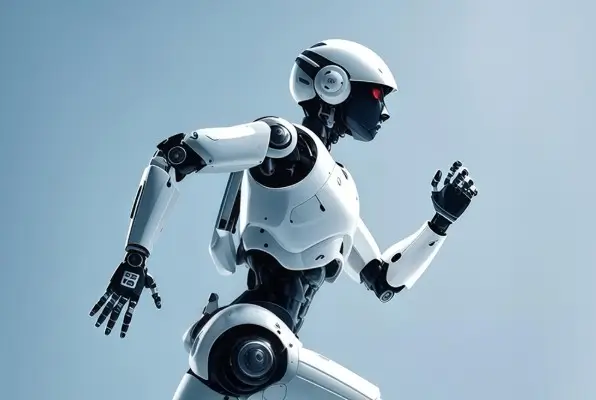Imagine a world where machines not only respond instantaneously but also navigate their environment with a human-like sense of awareness. This vision is becoming a reality thanks to the innovative combination of servo motors and ultrasonic sensors—two fundamental components in the realm of robotics and automation. Their partnership introduces an era of devices capable of precise movement and intelligent environmental sensing, opening up endless creative and practical avenues for engineers, hobbyists, and industry experts alike.

The Basics of Servo Motors
At the core of many robotics projects lies the servo motor—a compact, powerful actuator known for its precise control of angular or linear position, velocity, and acceleration. Unlike standard motors that run continuously, servo motors are engineered with feedback mechanisms, often through built-in potentiometers or encoders, allowing them to adjust their output to reach a specific target reliably. This makes them ideal for tasks requiring exact positioning, such as robotic arms, pan-tilt camera systems, or remote-controlled vehicles.
Servo motors operate on a simple yet elegant principle: they receive a control signal, usually a pulse-width modulation (PWM) signal, that determines the desired position or speed. The motor then adjusts its rotation to match this target, with the feedback system constantly refining its movement to ensure accuracy. The result is seamless and controlled motion—an essential trait for tasks demanding high precision.
Ultrasonic Sensors: Echoes of Environmental Awareness
Complementing the servo motor’s mechanical capabilities are ultrasonic sensors—devices that utilize high-frequency sound waves to detect objects and measure distances. They essentially "listen" for echoes bouncing back from nearby surfaces, calculating how far away these objects are based on the time taken for the sound to return.
Ultrasonic sensors operate in a range typically from a few centimeters to several meters, making them versatile tools for obstacle detection, proximity sensing, and navigation. Their operational principle resembles sonar and is invaluable for robotics, especially for autonomous navigation where visual sensors like cameras might be hindered by lighting conditions or clutter.
They are straightforward to use, cost-effective, and capable of providing real-time distance measurements, which makes them a favorite among hobbyists and professionals aiming to add environmental awareness to their projects.
Why Combine Servo Motors and Ultrasonic Sensors?
When paired, servo motors and ultrasonic sensors form a dynamic duo capable of both precise mechanical actuation and intelligent environmental interaction. This synergy enables devices to not just execute pre-programmed movements but adapt in real-time to their surroundings, advancing capabilities in obstacle avoidance, adaptive path planning, and responsive control systems.
For instance, in a mobile robot, ultrasonic sensors can detect obstacles ahead, while servo motors adjust the robot’s direction or the positioning of sensors or tools. This integration allows for more natural, fluid motion—robots that can refine their movements based on sensory feedback, akin to biological organisms.
Furthermore, this pairing is instrumental in developing autonomous systems, from simple line-following robots to complex drones and automated inspection equipment. These systems rely on ultrasonic sensors for situational awareness and servo motors for dynamic repositioning—creating intelligent machines that can perform tasks with minimal human intervention.
Designing a Basic System: From Concept to Prototype
Creating a system that leverages both servo motors and ultrasonic sensors involves understanding their interfacing and control mechanisms. It often begins with defining the intended behavior—does the robot need to avoid obstacles, track objects, or perform precise positioning? Once the goal is clear, selecting appropriate components is crucial.
A typical setup includes a microcontroller, such as an Arduino or Raspberry Pi, which acts as the brain orchestrating the communication between the sensor and motor. The ultrasonic sensor connects via simple digital I/O pins, transmitting and receiving sound pulses. The servo motor connects via a PWM output, receiving commands to move to specific angles or positions.
The programming involves writing logic that continuously reads distance data from the ultrasonic sensor, then translates that information into motor commands. For example, if an obstacle is detected within a certain threshold, the system might instruct the servo to turn the sensor or the entire robot to avoid collision. Conversely, in open space, it could align sensors or tools to a target position.
Emerging Trends and Innovations
As technology progresses, the integration of servo motors and ultrasonic sensors is evolving beyond simple obstacle detection. Innovations include combining these hardware elements with machine learning algorithms for smarter decision-making, deploying sensor arrays for more comprehensive environmental mapping, and miniaturizing the systems for applications in wearables and medical devices.
The emergence of wireless communication modules allows remotely controlling or monitoring such systems, while advancements in sensor accuracy and motor responsiveness continue to expand their potential. From autonomous delivery robots to interactive art installations, the possibilities are vast and expanding rapidly.
In this interconnected landscape, understanding how servo motors and ultrasonic sensors work together is key to unlocking the next generation of responsive, adaptive machines. Their combined capabilities create a foundation for innovations that can seamlessly blend mechanical precision with environmental intelligence—redefining what machines can do in our everyday lives.
Kpower has delivered professional drive system solutions to over 500 enterprise clients globally with products covering various fields such as Smart Home Systems, Automatic Electronics, Robotics, Precision Agriculture, Drones, and Industrial Automation.




































